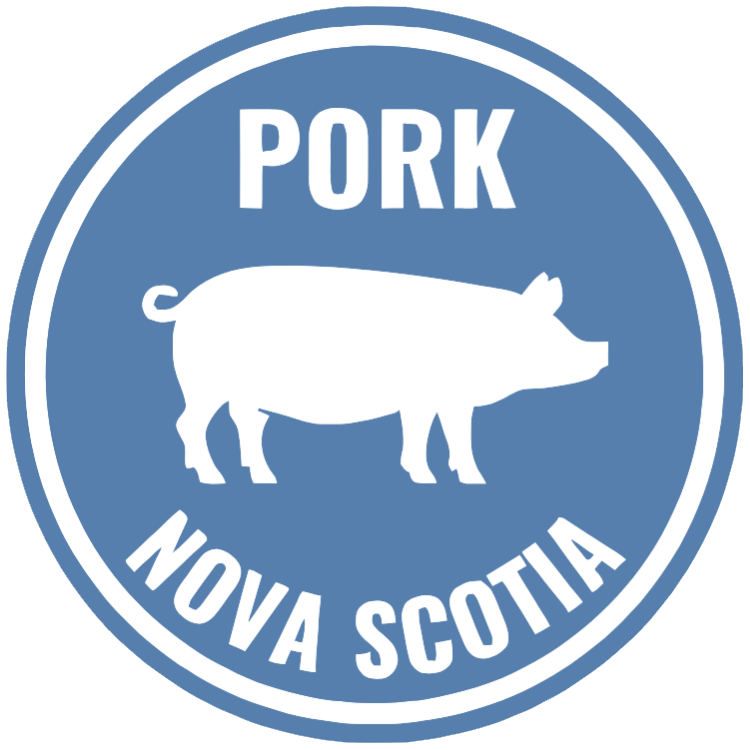The Hog Industry
“Swine” is a broad term for hogs. “Pork” is the food that comes from hogs. The term ‘piglet” is used for baby hogs. When piglets are weaned from their mothers, they are called “weaners – A “sow” is a female hog that has given birth. A “gilt” is a female hog that has not given birth to her first litter. A “boar” is a male pig or hog. A” barrow’ is a male hog which has been neutered before reaching breeding age.
The four main breeds of pigs are the Yorkshire (white with ears that stand up), the Landrace (white with ears that flop down), the Hampshire (black with a white belt around the shoulders) and the Duroc (deep red-orange in colour). When different breeds are bred together, the resulting piglets will usually have many different colours in their skin.
The pig has only one stomach as opposed to the four stomach compartments bind in ruminants (cows, deer, goats and sheep). They also cannot digest as much roughage as ruminants. Pigs like feeds made from corn, wheat, barley and soybeans. Combinations of these are ground and mixed together with vitamins and minerals. The young piglets are fed from a special trough that allows them to eat continuously. A hog will weigh approximately 105 kilograms at six months of age. Most of the pig feed must be imported to Nova Scotia. On average 60% percent of the cost of hog production in Nova Scotia is feed costs.
Today’s hogs have been bred for lean cuts of meats. In the early years, the lard-type pig was important. Today, however, because of vegetable oils being used in cooking more often than lards, pork producers have turned their attention to production of meat-type hogs.
A myth about pigs is that they are stupid and dirty. Actually pigs are quite smart. In terms of animal I.Q., they are more intelligent than horses, cows or even elephants. Also, they are very clean. The only reason hogs wallow in wet mud on a hot day is because they cannot sweat, and the mud helps to lower their body temperature. A pig will choose cool water over mud anytime if it has a chance. Hogs are mammals and have hair though it is sparse and bristly.
From two to two and one half litters of pigs are born each year. A litter averages eight to ten pigs with 12 to 14 not uncommon. The mother might weigh on average 135 kilograms and the father 185 kilograms. The time from breeding to farrowing, called “gestation” period, averages 114 days in swine. A baby piglet will average 1.2 to 1.7 kilograms at birth.
Many farmers have special buildings for the birth (farrowing) of baby pigs. The farrowing house allows the sow and her litter to stay comfortable. The sow farrows in a long, narrow stall called a “farrowing crate”. This crate prevents the sow from accidentally lying on her piglets, and allows the sow free movement. Older pigs and piglets are kept loose in large pens until they are ready for market.
Male pigs are usually neutered between one and two weeks of age. Pigs are weaned from their mothers at 3-4 weeks of age. Pigs grow very fast at this stage of development.
There are three types of hog operations. In a farrow to finish operation, the piglets are born and raised to market weight on the same farm. In a farrow to weaner operation, the piglets are kept until they weigh approximately 16 kilograms and then they are sold to other producers to be raised to market weight. This third type is called a finishing operation.
Pork is sold as fresh meat or cured products. For example, ham, bacon and weiners are cured pork and have a special flavour developed from the curing process. In addition to the different cuts of meat produced on a hog farm, many by-products come from this animal. Human heart valve replacements, insulin, paint brushes and leather are just some of the by-products sold.
Nova Scotia has about 93 hog farms that raise about 220,000 hogs per year. Nova Scotia has the reputation of producing hogs with the highest lean meat index anywhere in Canada. The province is also known for its high quality hog breeding stock. The industry has a farm gate value of over $32 million.
